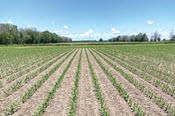
What has the most influence on yields?
By Paul Hermans
Being in the seed industry, probably the most common questions I am asked are: 1) What population should I plant my corn and soybeans at? 2) What is the best seeding depth for corn and soybeans?
Unfortunately, I usually respond with the typical agronomist answer of, “It depends.”
There is not just one answer. It depends on a lot of factors, ranging from yield expectations, soil type, crop type, and rotation, to disease management and more.
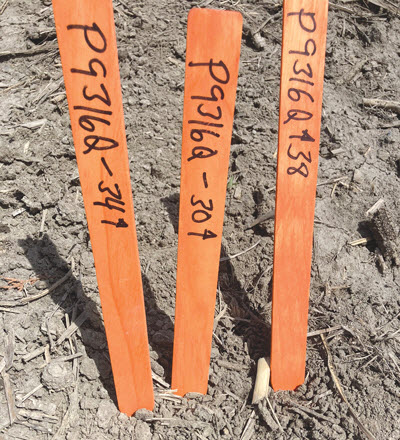
With all things between the two being equal, seeding depth definitely surpasses population and has a bigger influence on final yields.
Planting depth: Corn
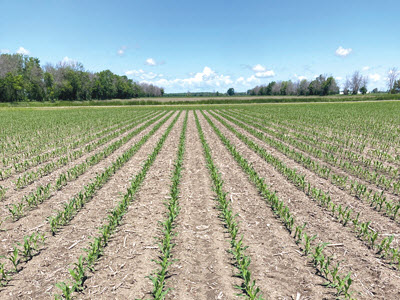
Everyone will have a different planting depth for corn. I recently conducted a Twitter poll to see what depth growers were planting at:
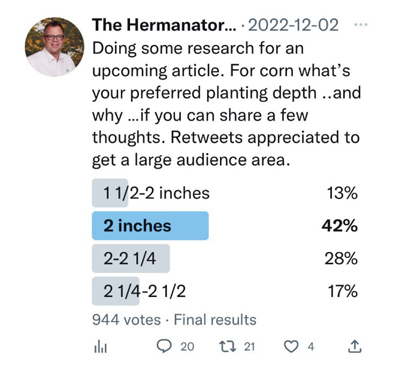
Some grower comments included:
- “My preferred planting depth is 2 to 2 1/4 inches; planter isn’t always that deep depending on soil factors, so provides a buffer.”
- “Always plant into moisture. I believe better roots/standability as well at planting at least 2 inches; sometimes up to 2 3/4 inches.”
- “We are around 2 1/2 inches. Moisture and temp are consistent.”
Assuming we have a nice uniform seed bed with the goal of having great seed to soil contact, seeding depth has a big influence on final stands, especially for corn.
Many growers will know their population numbers. Very few know their final ear counts. Ear counts matter. The more uniform they are, the higher your yields will be. Achieving uniform ear counts starts with optimal planting depth and even emergence.
Why is that? Right from the first planter pass, crops like consistency. Consistency in moisture and soil temperature. Big fluctuation swings change how a crop grows. Fluctuation in these two planting conditions dramatically affects even emergence.
Corn requires 30 per cent moisture content by weight to germinate. Soybeans around 50 per cent. (Figure 2)
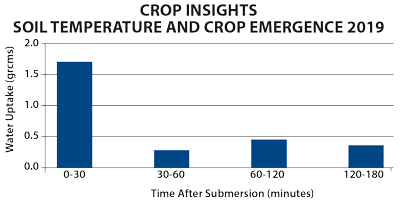
The water that corn takes up in the first 30 minutes is critical. Ensuring the first water taken up is warm will help reduce cold chilling and subsequent stand losses. (Figure 3)
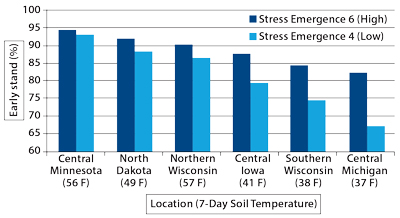
Keeping an eye on weather patterns and avoiding cold fronts is key. Planting into warm soils and avoiding temperature fluctuations in the upper 1 to 2 inch soil zone will help as well.
Does planting depth matter?
An Ohio State University study (which was funded by DuPont Pioneer) showed over a two-year period that ultra-shallow, half inch planting depth had the lowest plant stands and subsequent lowest yields, especially in a dry planting season. (Figure 4)
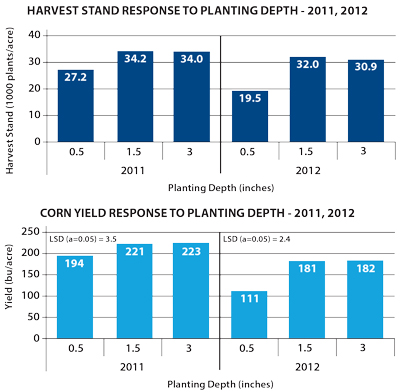
Looking back, 2012 was a dry planting season compared to 2011. Hence the larger differences in plant stands.
You may be wondering, “Why would I ever plant corn at a half inch?” And I totally agree. However, if you plant at 1 1/2 inches deep, the chances that some corn may be planted shallower exists. This could be due to several factors, including soil variability, planter chatter (in terms of planter units going up/down over cloddy soil), planter speed and more.
Another study, conducted by U.S.-based Matt Essick, Pioneer agronomy manager in the midwest, looked at cob weights in a uniformity trial. Cob weights were measured at various planting depths.
It was determined that planting depth was the main driver in ear weight, ear length and uniform emergence. (Figure 5)
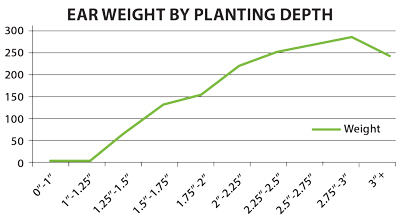
People would say that planting deeper takes longer to emerge. In general, yes, it may be one to two days later, but more uniform. Keep in mind that 1,000 uniform ears in a final corn stand can mean seven to 10 bushels of yield at harvest.
I will take a uniform stand of 32,000 ears that emerge two days later over a stand of 28,000 of uniform ears and 3,000 to 4,000 non-uniform ears any day. Consistency pays.
Planting depth: Soybeans
Let’s look at soybeans. Soybeans do not like the deeper planting depths that corn does. Ideal depths are around 1 1/2 inches but, if the season turns to be dry, chasing depths of 2 inches or deeper to find moisture is common. Remember, the moisture content needed to get soybeans germinated is 50 per cent.
Stand losses due to planting depth issues are not as critical as with corn. Losing 10 per cent of a corn stand that started at 34,000 has bigger implications than losing 10 per cent of a 165,000 soybean stand. Ensuring every seed emerges counts in the bigger scheme of yield.
Soybeans can struggle as they pull the cotyledons through the soil at deeper planting depths. Added to this, the soybean plant can run out of energy doing so. Crusting of soil caused by heavy rains can occur. Management tools can be utilized if crusting occurs. The use of a rotary hoe and other implements can assist with this. Replanting is the only option for shallow planting soybeans if stand count assessments warrant additional seed.
Keeping an eye on soil conditions is the key. Crop rotation, especially heavier corn residue situations, can drastically reduce yield stands as coulters manage cutting through heavier trash situations.
Drills in these situations may have a harder time getting optimal seeding depth placement versus planters. Adjusting equipment, offsetting planter angle, and utilizing secondary tillage can assist with better seed to soil contact and depth.
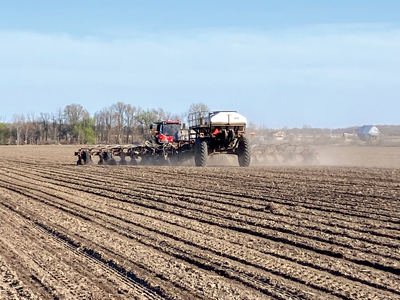
Population
Populations for corn and soybeans have a high correlation with yield environment and ultimately yield level. Yield levels in turn follow soil type and water-holding capabilities. For corn, the higher the yield level you have will mean the higher the population rate you will want to plant. For soybeans the opposite thinking exists. Higher yield levels mean lower populations.
Geographic location also plays a factor. For lower corn heat unit areas, studies have shown that higher populations return more income per acre. Why is this? Lower heat unit corn plants tend to be smaller in nature both from the number of leaves, size of leaves and stature of the plant. The vegetative period for lower maturity corn is shorter than longer-day corn. To maximize light interception and capture as much sunlight across a given acre, higher populations and hybrid genetics achieve that goal.
If we look across the United States, corn populations have been steadily increasing. Breeders have done a great job in selecting corn germplasm that can handle stress. Higher populations mean plants are closer together within the row, increasing plant to plant competition for resources. Average populations have been increasing about 270 seeds per acre per year (https://quickstats.nass.usda.gov/).
From a return-on-investment standpoint, look at three factors: 1) price of seed, 2) commodity price, and 3) yield level, to determine final profitability. Various companies have online tools to determine this information. (Figure 6)
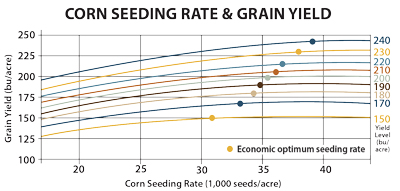
If you are questioning populations on your farm, simply conduct some population trials. Once you have a proper foundation set for drainage and fertility, experiment with higher populations. It is recommended to take your current population and increase it by at least 4,000 seeds per acre in a replicated trial across a field to determine the upper yield potential of various fields and soil types.
Soybeans can be more temperamental when considering factors like disease history, tillage type, rotation, etc. Planting into no-till or heavy residue can be a challenge, especially taking into consideration the previous harvest timelines, the breakdown of residue since last fall, and impending weather conditions.
These factors would warrant a higher soybean seeding rate to compensate for higher losses.
Heavier, white mold-prone soils warrant lower populations. Stressed soil that has lower yields may require higher populations to obtain more plants per acre, thereby offsetting shorter plant height, less branching and subsequent seed set. I regularly ask growers, “Do your beans come up to your waist or to your knees?” This simply describes the growing environment and how the plants adjust growth habits based on nutrient and water availability. For waist-high soybeans, lower populations are recommended, compared to knee-high soybeans.
Variable-rate seeding in both crops can help finetune planting rates.
Technology available today on field equipment and office computers easily allows prescriptions to be made, allowing maximum returns for your corn and soybean acres.
Talk to your company sales representative or agronomist for local data to help tweak population rates for your area. Trends are the same, but microclimates and different farming strategies exist, not only across provinces, but across local geographic areas.
Spring planting is almost here. Pay close attention to soil conditions, weather fronts and soil moisture this spring, as this will help with depth settings to improve emergence and overall yields. Although population numbers are critical, getting a uniform stand is the top priority compared to increasing seeding rates.
Here is hoping your spring planting report card gets an A+ mark on planting, emergence and stand count. BF



Post new comment